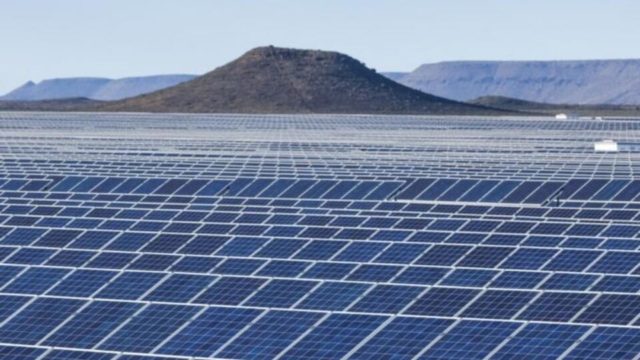The provincial grid is congested and “additional projects cannot be taken on without a substantial upgrade of the grid itself”.
THE NORTHERN Cape does not have capacity for more renewable energy projects, where independent power producers will have to move to other provinces in the near future.
The general manager of Scatec in Sub-Saharan Africa, Jan Fourie, stated that a recent report issued by Eskom gave an update on available space on its national grid, which held major implications for the Province.
“The Northern Cape is a very popular site due to its abundance of sun, wind and other natural resources. Most of the current renewable energy projects in South Africa are located in the Northern Cape, with an estimated 70 percent of new photovoltaic and 60 percent of wind project developments situated in the Province. However, the energy produced now exceeds the demand for power,” said Fourie.
He said that five out of six of their solar and wind energy projects are located in the Northern Cape.
“We have three projects in Upington, one in Hanover, one situated in De Aar, while the site in Kenhardt is under construction. Our sixth project is based in the Eastern Cape.”
Fourie explained that the provincial grid was congested.
“Additional projects cannot be taken on without a substantial upgrade of the grid itself.”
He explained that the distribution of energy manufactured in the Northern Cape to larger provinces with a higher power consumption would require upgrading the grid, installing infrastructure, obtaining permission from landowners to utilise their land and building additional transformers and sub-stations.
“Considering the urgency of our country’s need to transition to renewable energy, I don’t foresee this being a practical option in the short term. The alternative is for developers to look at other provinces where solar and wind resources are also available.
“This creates an opportunity for a fairer distribution of skills and jobs and cash investments that can be distributed across more provinces.”
Fourie said new job opportunities could result in the redeployment of workers employed in the coal sector.
He added that the Generation Connection Capacity Assessment (GCCA) 2022 report that was published by Eskom indicated that renewable energy projects had reached full generation capacity in the Northern Cape.
“Eskom recently published an updated GCCA which illustrates the capacity that is available for the connection of new generation capacity to the national grid. This report indicates that there is no further available capacity for renewable energy to be connected to the Northern Cape grid, which means any new photovoltaic or wind projects will need to be developed in provinces such as the Western Cape, North West, Free State or even Limpopo.”
He pointed out that the Northern Cape did not experience load shedding due to a shortage of power. “Load shedding is uniformly spread across the country to ease the load, irrespective of power consumption.”
Fourie believed that in order to reduce the cost of electricity it would be necessary to increase the generation of renewable energy.
“Renewable energy is the cheapest and most environmentally friendly form of producing electricity. In the long term, consumers will be able to purchase electricity directly from an independent power producer. However, this cannot happen overnight or before all coal stations are decommissioned.
“Currently this option is only available to mining companies and industrial plants to control carbon emissions and ensure a steady supply of energy.
“In the future this option will be available to shopping centres, commercial businesses and households.”








